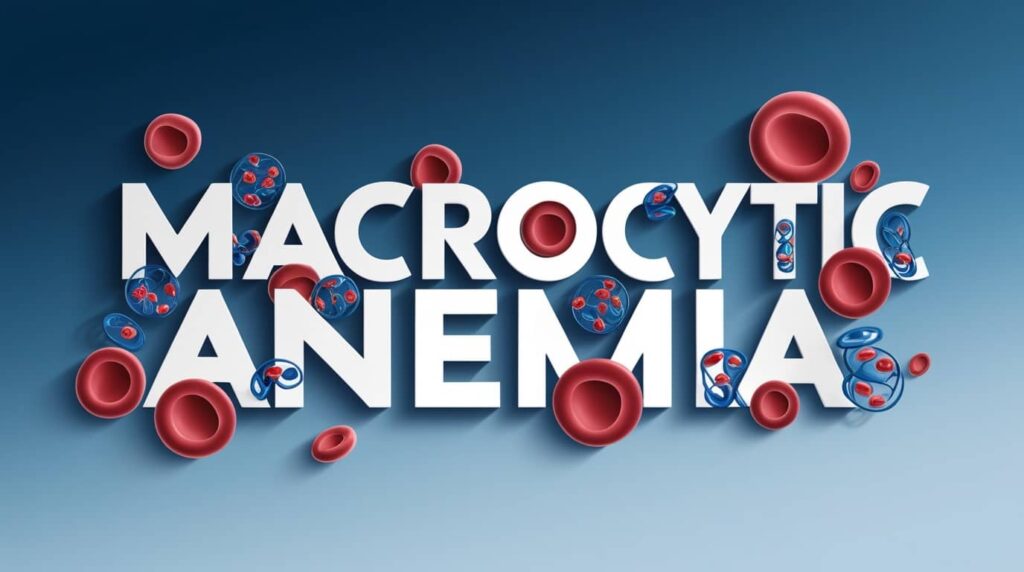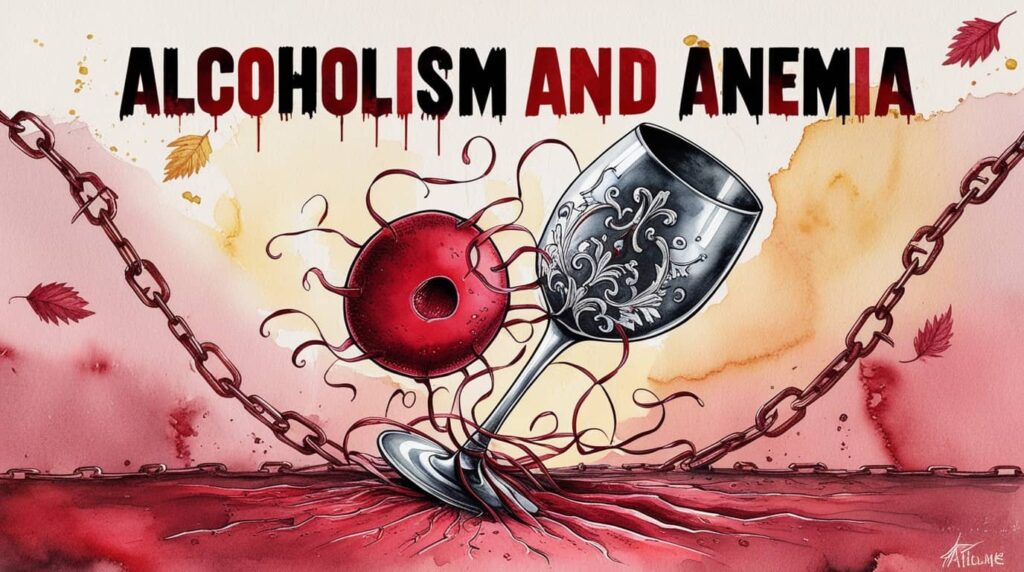What is Sideroblastic Anemia?
The term “sideroblastic anemia” (SA) refers to a group of inherited and acquired anemias of ineffective erythropoiesis that are characterized by an accumulation of ring sideroblasts (RS) in the bone marrow and decreased production of mature red blood cells.
Thank you for reading this post, don't forget to subscribe!Sideroblastic anemia can cause both microcytic and macrocytic anemia, depending on the type of mutation that caused it.
Epidemiology of Sideroblastic Anemia
Sideroblastic anemia is a rare condition. Rare diseases are defined as those that affect fewer than 200,000 people in the United States.
Researchers lack precise statistical data on the epidemiology of the disorder because of its low incidence and prevalence.
Pathophysiology of Sideroblastic Anemia
Heme deficiency and sideroblastic anemia are caused by the inability to form aminolaevulinic acid (ALA), which results from a defect in the enzyme ALAS2 that catalyzes the reaction.
Heme deficiency is also caused by the ABCB7 and GLRX5 mutations, but via a different pathway.
Although it is still unknown whether the SLC25A38-encoded amino acid transporter facilitates the import of glycine to the mitochondria for ALA formation, likely the defect in the novel type caused by SLC25A38 mutations may also be attributed to heme deficiency.
Causes of Sideroblastic Anemia
There are two forms of sideroblastic anemia.
The first form, which is inherited, is caused by gene mutations related to heme synthesis, iron-sulfur cluster biogenesis, or mitochondrial metabolism.
The gene defect for heme synthesis is on the x chromosome, resulting in mutations in the aminolevulinate synthase (ALAS2), adenosine triphosphate-binding cassette B7 (ABCB7), or glutaredoxin 5 (GRLX5) enzymes.
Additional causes include mutations in the thiamine transporter SLC19A2, RNA modifying enzyme pseudouridine synthase (PUS1), mitochondrial transporter (SLC25A38), mitochondrial tyrosyl-tRNA synthase (YARS2), and mitochondrial DNA deletions.
Secondary causes include drugs, toxins, copper deficiency, and chronic neoplastic disease.
Drugs that are known to most frequently cause sideroblastic anemia include chemotherapy, copper-chelating agents, hormones, and antibiotics.
The use of isoniazid, lead toxicity, and alcohol are other factors that can cause sideroblastic anemia.
Related: Symptoms of Dying From Anemia
Signs and Symptoms of Sideroblastic Anemia
Patients with sideroblastic anemia commonly present with anemia-related symptoms such as: –
- Fatigue.
- Malaise.
- Shortness of breath.
- Palpitations.
- Headaches.
Physical examination may show pale skin, conjunctival pallor, or bronze-colored skin in some cases due to iron overload.
Complications of Sideroblastic Anemia
It has been reported that liver and systemic iron overload result from sideroblastic anemia caused by mutations in the XLSA, GLRX5, and SLC25A38.
Iron overload is caused by ineffective erythropoiesis as a result of mitochondrial iron toxicity, which increases iron absorption.
Similar to genetic hemochromatosis, iron concentrates in the liver and can eventually cause fibrosis and cirrhosis.
Rarely, iron buildup in the heart can result in an abnormal heart rhythm and heart failure.
Diagnosis of Sideroblastic Anemia
The presence of ring sideroblasts in the bone marrow is used to diagnose sideroblastic anemia.
Siderocytes are the name for the red blood cells that have these iron inclusions.
The patient’s mean corpuscular volume is low on a complete blood count, which indicates microcytosis. The patient also has low mean corpuscular hemoglobin and increased red blood cell distribution width.
After Perl’s reaction has confirmed the presence of ring sideroblast, the patient’s bone marrow should be examined for dysplasia and serum ferritin levels (SF). If present, the patient is most likely suffering from clonal hematologic disorders like myelodysplastic syndrome.
The patient either has congenital or secondary acquired sideroblastic anemia if it is absent.
In cases of refractory anemia with ring sideroblasts (RARS), patients occasionally present with macrocytic anemia.
If secondary acquired sideroblastic anemia has been ruled out and the cause of the sideroblastic anemia is unclear, genetic testing should also be taken into account.
Treatment and Management of Sideroblastic Anemia
The severity of sideroblastic anemia determines treatment.
Physicians can follow up with patients who have a mild or asymptomatic presentation in the outpatient clinic.
Oral pyridoxine 50–100mg/day has been shown to partially or completely correct anemia in patients with X-linked sideroblastic anemia.
If a patient’s anemia is severe and they don’t respond to pyridoxine, blood transfusions are recommended.
Iron chelation must be taken into consideration for patients who need frequent transfusions to prevent iron overload.
Deferoxamine or oral chelators should be started when serum ferritin is greater than 1000 ng/L.
If iron overload is not treated, it could result in the unresponsiveness of pyridoxine.
As a result, it is also advised that patients who receive pyridoxine and still have normal hemoglobin levels receive phlebotomy as a treatment for iron overload.
Patients with syndromic congenital sideroblastic anemia may develop diabetes mellitus, so tight glycemic control should be encouraged.
If blood sugar levels are not well controlled, hypoglycemia should also be taken into account.
Drugs that are known to cause secondary acquired sideroblastic anemia should be stopped and avoided.
Since it was acquired, the patient’s anemia will improve once the medication is stopped.
In a patient with copper deficiency, copper should be replaced through nutrition.
Aspirin therapy is recommended for patients with MDS/MPN-RS-T who have an additional JAK2V617F mutation.
Summary
Sideroblastic anemia (SA) refers to a group of inherited and acquired anemias of ineffective erythropoiesis that are characterized by an accumulation of ring sideroblasts (RS) in the bone marrow and decreased production of mature red blood cells.
It is a rare condition. Rare diseases are defined as those that affect fewer than 200,000 people in the United States.
Patients with sideroblastic anemia commonly present with anemia-related symptoms such as fatigue, malaise, shortness of breath, palpitations, and headaches.
Physical examination may show pale skin, conjunctival pallor, or bronze-colored skin in some cases due to iron overload.
The presence of ring sideroblasts in the bone marrow is used to diagnose sideroblastic anemia.
After Perl’s reaction has confirmed the presence of ring sideroblast, the patient’s bone marrow should be examined for dysplasia and serum ferritin levels (SF). If present, the patient is most likely suffering from clonal hematologic disorders like myelodysplastic syndrome.
The patient either has congenital or secondary acquired sideroblastic anemia if it is absent.
The severity of sideroblastic anemia determines treatment.
Physicians can follow up with patients who have a mild or asymptomatic presentation in the outpatient clinic.
Oral pyridoxine 50–100mg/day has been shown to partially or completely correct anemia in patients with X-linked sideroblastic anemia.
If a patient’s anemia is severe and they don’t respond to pyridoxine, blood transfusions are recommended.
Drugs that are known to cause secondary acquired sideroblastic anemia should be stopped and avoided.
References
Sideroblastic anemia – StatPearls – NCBI Bookshelf. Retrieved March 12, 2023, from PubMed
Abu-Zeinah, G., & DeSancho, M. T. (2020, September 25). Understanding sideroblastic anemia: An overview of genetics, epidemiology, pathophysiology and current therapeutic options. Journal of blood medicine. Retrieved March 13, 2023, from PubMed
Author links open overlay panelClara Camaschella, Inherited sideroblastic anemia comprises several rare anemias due to heterogeneous genetic lesions, Ganz, T., Yaouanq, J., Pierre, T. G. S., Gardenghi, S., Ishikawa, H., Napier, I., Sheftel, A. D., Corsi, B., Chen, J. J., Cavadini, P., Taketani, S., Camaschella, C., Pondarre, C., Rouault, T. A., Aivado, M., Busque, L., Cazzola, M., … Bottomley, S. S. (2009, September 26). Hereditary sideroblastic anemias: Pathophysiology, diagnosis, and treatment. Seminars in Hematology. Retrieved March 13, 2023, from Elsevier







